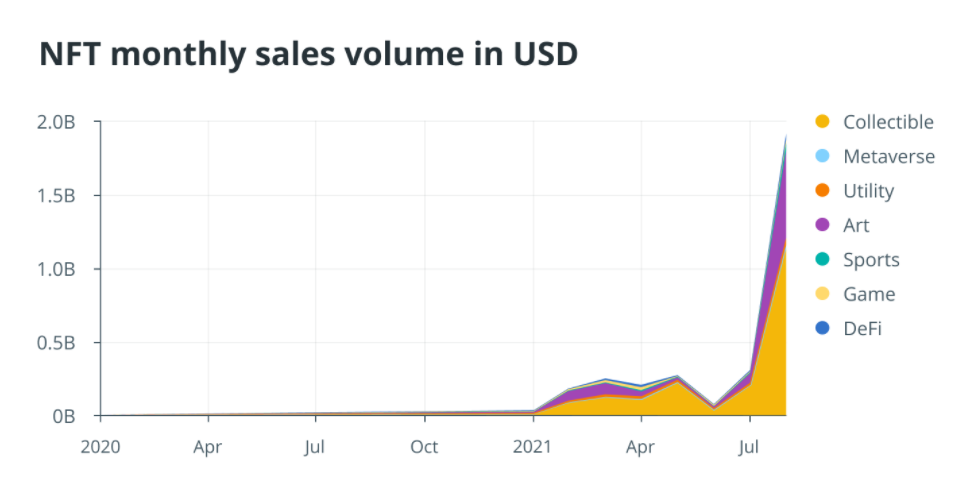13 Jan 2022 Marsha Tusk
A Breakthrough Year For NFTs With A $17.7B Record In 2021
Non-fungible tokens, or NFTs, really made their way into the spotlight of cryptos by embracing one of the most iconic public figures around them – a topic that the now traditional crypto sector has yet to brag for.
Anything from Internet memes, digital artwork, and Twitter avatars to the very first version of Wikipedia can be put into an NFT, which would sell for hundreds of thousands of dollars. NFTs managed to bring celebrities and franchises like Snoop Dogg, Gary Vaynerchuck, and the National Basketball Association into the world of blockchain, which would ultimately lead to fintech innovation, as blockchain technology is now being used to represent assets beyond the chain.
However, the idea of NFTs is far from new, as Bitcoin pioneer Hal Finney described an early version of NFTs in 1993, calling NFTs “crypto trading cards.“ He further clarified on the topics of scarcity, exclusive ownership, and provenance, which are now at the core of every NFT.
Real non-fungible tokens, however, took over two decades to emerge, with Kevin McCoy and Anil Dash creating the “Quantum” NFT iteration. However, another year passed until Etheria, the first Ethereum-based NFT, emerged with many crypto enthusiasts believing that this is the first truly non-fungible token.
Nevertheless, the term NFT started its life in 2017 when two of the most popular NFT projects to date launched officially - CryptoPunks and CryptoKitties. 2017 also saw the first NFT sale and the first wave of NFT popularity surge, in sync with the first major bullish crypto cycle.
In its short time being alive, the NFT sector made a massive surge - from just $41 million in 2018 to an astonishing $2.5 billion in the first half of 2021. Even more, the growth in 2020 alone is insane, with the NFT sector closing down in 2021 with over $9 billion in sales. In contrast, sales in 2020 managed to hit just $340 million.
However, NFTs also suffered from market volatility, as the pressure in the crypto realm pushed NFT daily volumes down by as much as 90%. A rebound happened in July, reaching $2.6 billion in total volume in August on Ethereum alone.
Speaking of Ethereum, the blockchain remains dominant in the NFT market, but interest is growing in alternative layer-one blockchains due to their cheaper transaction fees and faster block times. Nevertheless, Ethereum still holds around 80% of NFT sales in 2021.
 Source: NonFungible.com
Source: NonFungible.com
Meanwhile, NFTs differentiated from just art and collectibles and migrated towards player-based games such as F1 Delta Time, Unchained, and Decentraland. In the past six months, decentralized virtual land ownership exploded, with plots on Decentraland selling for as much as $500,000.
And although the overall share of NFT transactions for art and collectibles decreased in 2021, they are still dominating the NFT scene. Their dependence on the broader crypto market is still high. Whenever the crypto market crashed, like the 2018 bear market, and the March 2020 COVID-19 crisis, NFTs also decrease in popularity. NFTs also increase in popularity during the times the crypto sector is blooming, which further adds to the statement that if crypto prices drop, the NFT market will follow.
Ethereum Crypto Market cryptocurrency news crypto news cryptocurrency market NFT non-fungible token





























